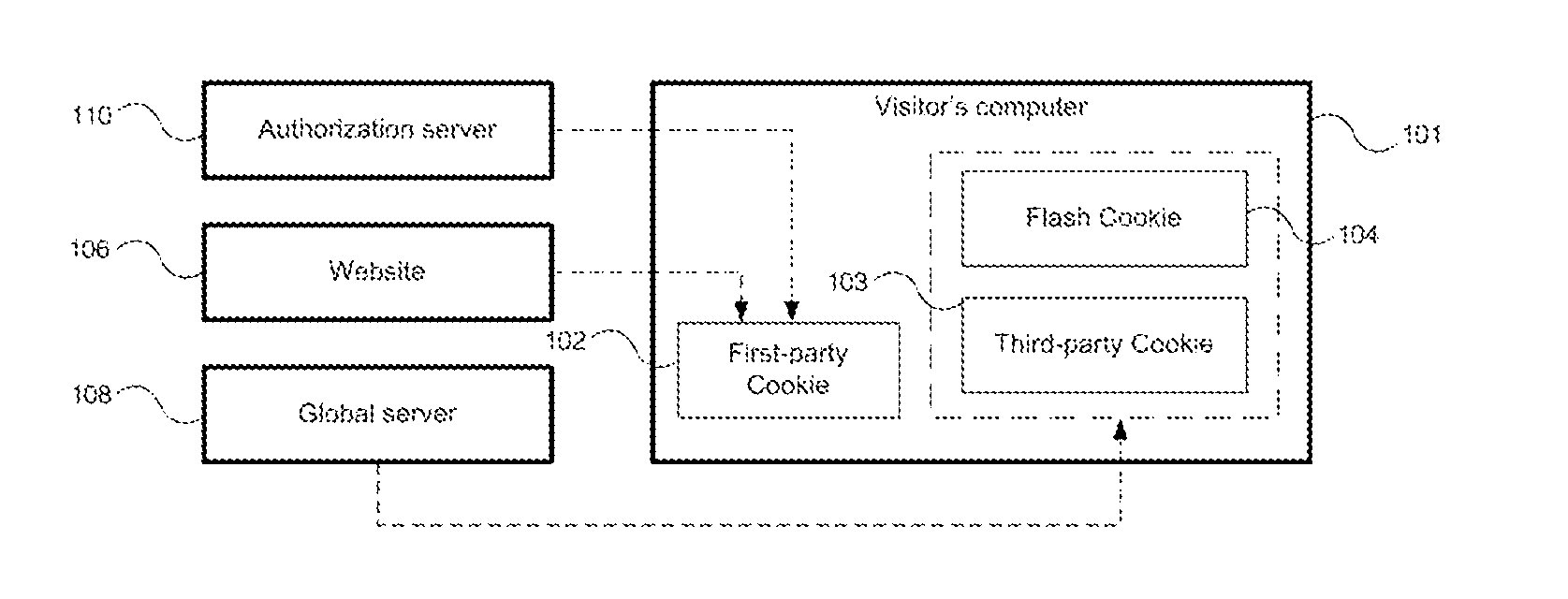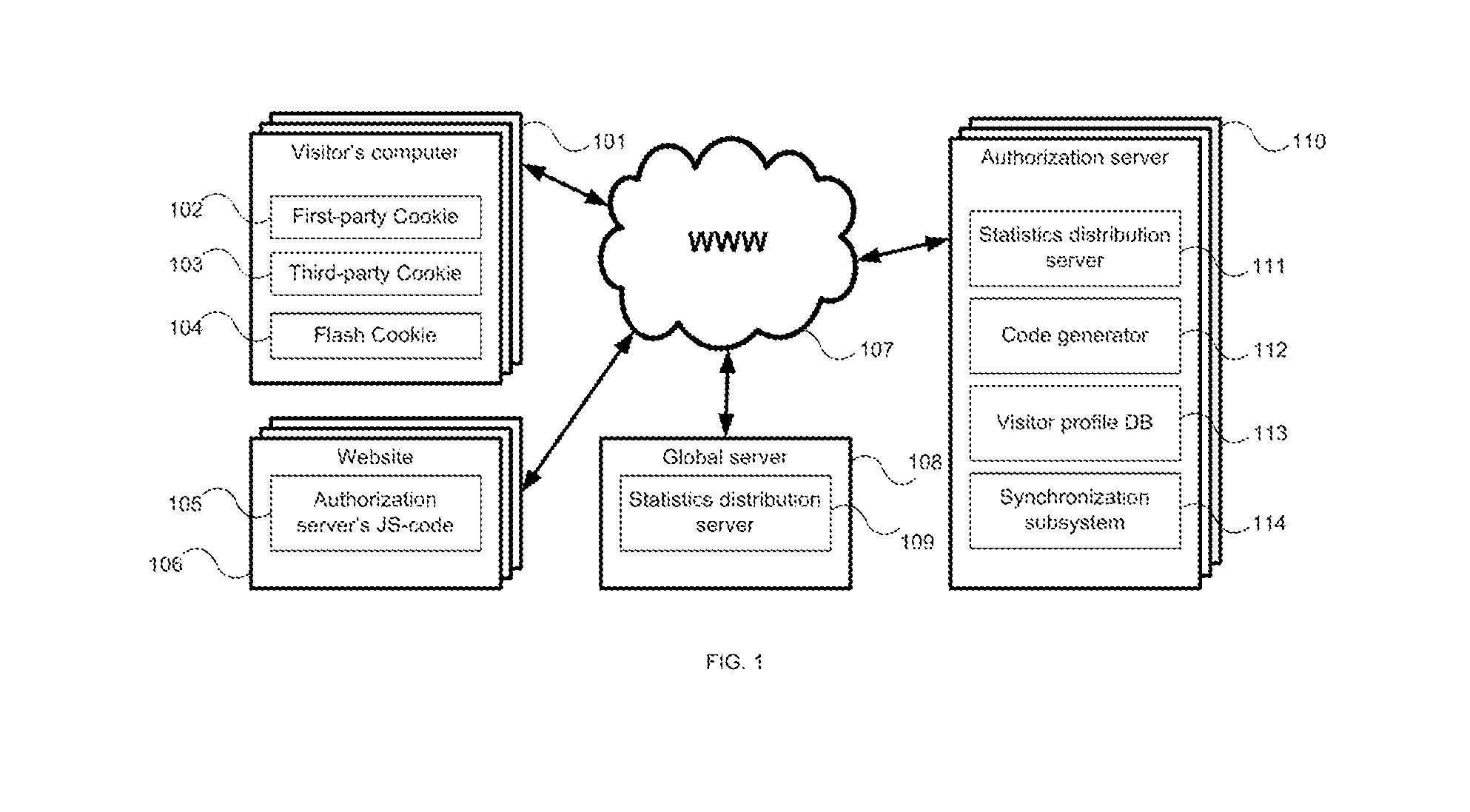Website visitor identification algorithm
a visitor identification and website technology, applied in the field of website visitor identification algorithms, can solve the problems of many problems of cookies, the inability of visitors to help identify cookies, and the inability to identify persistent visitors,
- Summary
- Abstract
- Description
- Claims
- Application Information
AI Technical Summary
Benefits of technology
Problems solved by technology
Method used
Image
Examples
Embodiment Construction
[0019]FIG. 1 shows a general diagram displaying the devices involved in the identification algorithm. All the components interact via the Internet 107 using the HTTP protocol. To run the algorithm, Javascript code 105 for the authorization server should be embedded in website 106. Once the Javascript code is embedded in the site, any visit to the website 106 will be tracked by the authorization server. The server comprises the following functional modules: the statistics distribution server 111, which is used for generation and distribution of Javascript scripts to the browser where the identification request originates; the code generator 112, which is used to create a unique visitor code for each visitor; visitor profile database 113, which is a relational database that stores website visitor data; and synchronization module 114, which synchronizes with the global server 108. The global server 108 is used to enable access to the third-party cookie 103 and the Flash cookie 104. The...
PUM
 Login to View More
Login to View More Abstract
Description
Claims
Application Information
 Login to View More
Login to View More - R&D
- Intellectual Property
- Life Sciences
- Materials
- Tech Scout
- Unparalleled Data Quality
- Higher Quality Content
- 60% Fewer Hallucinations
Browse by: Latest US Patents, China's latest patents, Technical Efficacy Thesaurus, Application Domain, Technology Topic, Popular Technical Reports.
© 2025 PatSnap. All rights reserved.Legal|Privacy policy|Modern Slavery Act Transparency Statement|Sitemap|About US| Contact US: help@patsnap.com



